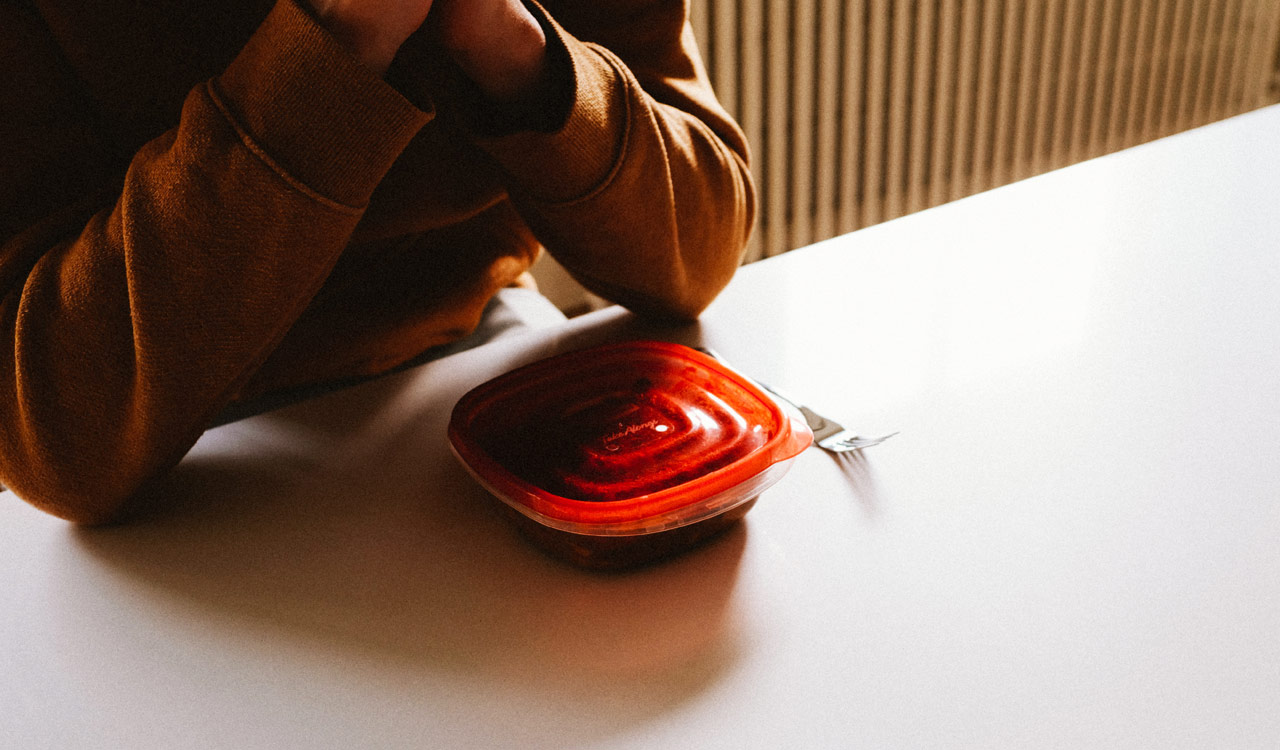Way back in May of this year – I know that’s only a few months ago but with the entirety of summer sandwiched in between now and then it now seems like an eternity has passed – business scribes were getting ready to write their eulogies for the iconic American household brand Tupperware (TUP). Why? It had just announced that there was “substantial doubt about the company\’s ability to continue as a going concern.” (In case you’re wondering, that’s business-speak for ‘we’re pretty much screwed.’)
According to a 2023 Harris poll, younger millennials and Gen Zers are highly suspicious of the Tupperware brand which made a name for itself by selling plastic, and the company has also become a target among the environmentalists looking to end the world’s dependence on plastics and a host of other hydrocarbon derivatives.
But it appears that America wasn’t ready just yet to part ways with the iconic brand that brought us classics like the Five Piece Ribbed Servalier Storage Set or the Ham Flavor Saver Storage Server Container. How could Americans possibly go on without continued access to the Caribbean Sea Tortilla Keeper or the Jel-N-Serv Gelatin Tulip Mold?
The Market Throws Tupperware a Lifeline
Thanks to a handful of lenders and possibly, just maybe, a band of Dumb Money retail investors, Tupperware weathered its late Spring brush with death.
In August, the Orlando-based maker of plastic kitchen and household doodads announced – much to the elation of many a homemaker across the country – that the company had reached a deal with its creditors to restructure interest payments on outstanding debt while securing a new line of financing. And just like that … or like a Fridgesmart container with last week’s roast beef dinner forgotten in the depths of the fridge … Tupperware was back!
Well, sort of.
Meme Stock
As the market began to get wind that the company was no longer on the brink of ending its 77-year run as the go-to brand for leftovers and home-packed school lunches, the stock price shot up from a near 52-week low of $0.64 a share to just under $5.50. Despite this impressive gain, many observers at the time speculated that Tupperware’s rally was due less to any change in its business fundamentals or long-term prospects; rather, its shares had simply the good fortune to become the latest everyman meme stock Tupperware. Just like GameStop, Tupperware had likely benefited from a band of retail investors that had joined forces on social media to direct their speculative bets on an otherwise underperforming company just to stick it to big-money institutional investors with significant short positions in the stock. Note: The company is still far, far away from where it was trading only a few years ago in the mid $30 range.
Nonetheless, while creditors had given Tupperware something of a lifeline, it is a rather short one. Rehabilitating Tupperware and getting it back on top of the storage market will fall on the shoulders of its CEO, Miguel Fernandez. And he has his work cut out for him.
According to a 2023 Harris poll, younger millennials and Gen Zers are highly suspicious of the Tupperware brand which made a name for itself by selling plastic, and the company has also become a target among the environmentalists looking to end the world’s dependence on plastics and a host of other hydrocarbon derivatives. The company has also become the scourge of health and safety advocates who cite a long laundry list of reasons why plastic food storage is simply a terrible idea (not the least of which is that BPA-based plastics leech toxins into the food).
It All Started with a Burp
Despite the current headwinds facing the company, in the world of homewares, few brands have achieved the iconic status and widespread popularity of Tupperware. The brand’s history is a fascinating journey that spans decades, from its humble beginnings as a revolutionary plastic container to its enduring presence in kitchens around the globe today.
The story of Tupperware began with its inventor, Earl Tupper, a self-taught chemist-cum-inventor. In the early 1940s, Tupper was working on developing innovative materials for everyday use when he stumbled upon a unique plastic material called polyethylene which had the potential to revolutionize food storage due to its durability and airtight sealing properties.
In 1946, Tupper introduced the world to his first airtight, “burpable” container, the \”Tupperware Seal.\” It was a simple yet ingenious design that allowed food to stay fresh for longer periods, thanks to its airtight seal, which prevented moisture and air from entering. To make his product accessible to the masses, Tupper initially looked to hawk his containers through retail chains such as hardware stores.
Brownie Points
While the product itself was seen as fairly innovative, Tupper was no sales genius; he struggled to convince consumers to embrace this new way of storing food. (Not to mention that selling a container for storing a half-eaten sandwich in a location mainly known for selling nails, screws, and tools didn’t make any sense in the context of a mid-century-era hardware store.)
But here is where the story takes a turn.
Enter Brownie Wise, a charismatic, entrepreneurial woman who would change the course of Tupperware\’s history. In 1950, Wise, a divorcée and single mom with a knack for sales and socializing, was introduced to the burpable product line. As the legend goes, Wise immediately recognized Tupperware\’s potential and proposed a novel marketing strategy – The Tupperware Party; a revolutionary concept at the time that combined social gatherings with product demonstrations and sales. It was social selling nearly 70 years before Instagram.
Tupper and Wise partnered to launch the first Tupperware Party in 1951. These gatherings brought women (yes, women – it was the 1950s folks!) together to learn about the benefits of Tupperware while enjoying a social experience. In short order, the Tupperware Party became a cultural phenomenon, empowering women to earn income and build their own businesses by selling Tupperware products to their friends and neighbors.
And we know what happened next is no secret: Tupperware’s success inspired a host of other companies and entrepreneurs to begin experimenting with peer-to-peer selling models that turned everyday consumers into brand Ambassadors. It’s no coincidence that shortly following the early success of the Tupperware Party sales model, some of America’s biggest network marketing firms got their start: Shaklee turned to multilevel marketing in 1956, Amway got started in 1959, and Mary Kay launched in 1963.
Rapid Expansion and Criticism
With the Tupperware Party model, the company rapidly expanded across the United States. In 1954, Tupperware\’s annual sales reached $25 million, a staggering figure at the time. By 1958, the company\’s revenues surpassed $100 million, solidifying its place as a household name.
However, as Tupperware\’s popularity grew, so did criticism surrounding its use of plastics. While polyethylene was a remarkable material for food storage, concerns arose about the potential health hazards of the chemicals used in plastic production. And although these worries were not unique to Tupperware, they reflected a broader debate about the safety of plastics and food. Although Tupperware’s PR machine worked overtime to address these concerns by emphasizing the safety of its products, the debate over plastic safety continued to simmer quietly in the background. To its credit, over the years, the company made efforts to address environmental concerns by introducing more environmentally sound materials and recycling programs, although many critics feel that the brand showed up far too late to the eco-friendly party.
The Era of Competition
As Tupperware\’s success continued, competitors eventually entered the market, offering alternative food storage solutions. Brands like Rubbermaid and GladWare began to challenge Tupperware\’s dominance in the plastic container industry. They introduced their own innovations in design, convenience, and durability, forcing Tupperware to evolve its product offerings and marketing strategies and pursue more traditional retail sales strategies.
In response to increasing competition and changing consumer preferences, Tupperware gradually expanded its product line beyond traditional food storage containers by introducing microwave-safe containers, freezer-friendly options, and specialized gadgets for various food items. Tupperware also expanded its global reach, with a presence in over 100 countries.
In 1999 Tupperware launched its first ecommerce platform, allowing customers to shop online in addition to traditional Tupperware Party sales. This digital transformation has helped Tupperware stay relevant in the age of online shopping although many argue that the internet cannibalized its unique Tupperware Party sales channel.
The Tupperware Legacy and Lesson
Tupperware\’s cultural impact extends beyond its product offerings. The Tupperware Party concept has become synonymous with social gatherings, empowerment, and entrepreneurship for women. It has inspired books, documentaries, and even a musical. From its pioneering plastic containers to its iconic Tupperware Parties, the brand has left an indelible mark on kitchen storage and American cultural history. The company\’s influence on modern consumer culture remains undeniable.
Yet, on one hand, while Tupperware\’s storied history is a testament to innovation and entrepreneurship and has become a cultural touchstone for several generations of Americans, on the other, it’s a tragic story of a brand that was ahead of its time, but then was slow to react to the changing terrain of consumer pressure.
Tupperware is on our radar: we’ll see where the brand goes from here.




